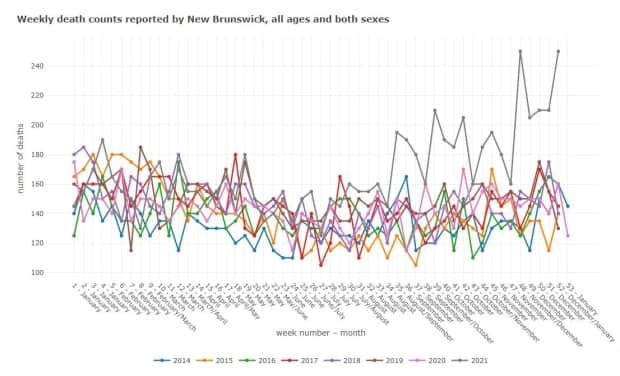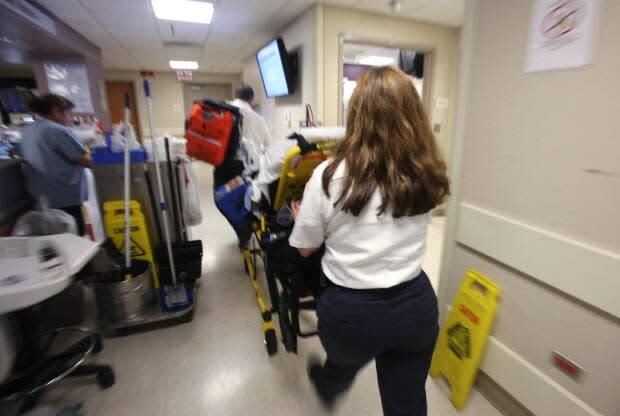Unexplained high death counts in N.B. concerning, health minister acknowledges

In a noticeable change in tone Friday, Health Minister Dorothy Shephard told the legislature she is concerned about unexplained high death counts in the province in the second half of 2021 and will attempt to get to the bottom of what happened.
"I think that everybody wants to know," said Shephard under questioning from interim Liberal Leader Roger Melanson.
Melanson was asking about an updated Statistics Canada report Thursday showing an estimated 4,599 people died in the province during the final 25 weeks of 2021, 886 more than long-term averages for that time of year after adjusting for population growth and aging.

It is a death rate 23.9 per cent above normal, the highest rate of "excess mortality" among provinces over that period, ahead of other high rates posted by British Columbia, Saskatchewan and Alberta.
"We all want to know what happened last fall," said Melanson.
Shephard agreed.
"It is a question that New Brunswickers need to have an answer to, Mr. Speaker, and I assure the interim leader of the Opposition that that is going to happen," she said.
COVID deaths
New Brunswick officially recorded just 114 deaths from COVID during the 25 week period under scrutiny.
Academics like the University of British Columbia's Kimberlyn McGrail and the University of Toronto's Tara Moriarty have raised the possibility that unusually high death counts in provinces that do not closely match their COVID death counts could mean fatalities caused by the virus were missed by health authorities.
On Thursday, Moriarty said a distinct spike in deaths in New Brunswick that occurred in the middle of a large COVID outbreak during the last five weeks of 2021 almost certainly suggests COVID deaths were occurring, but not being recorded.

"The overlap is almost perfect in time. So that's a really important clue that a lot of it is likely COVID related," said Moriarty.
"The level of excess mortality in New Brunswick during that period is enormous. And if it's not COVID killing people, what the hell is it?"
Shephard said Friday she considered that "fear mongering" by Moriarty. But did accept Moriarty and Melanson's position that answers to what killed so many in 2021 are required.
"I agree with the Leader of the Opposition, Mr. Speaker, and a decision has been made by the Department of Health that they will complete an excess deaths analysis once all registered deaths for 2021 have been coded with Statistics Canada," said Shepard.
Premier concerned
Premier Blaine Higgs said he too found the elevated number of deaths "obviously most concerning," and pledged the issue will be thoroughly scrutinized.

"If there's more investigation requirements, there's more information required. We will proceed to get everything we can," said Higgs.
It was a distinct change from when Melanson asked about the same issue in the legislature in May and then again last week. At the time he was accused by Shephard of making "an insinuation" of wrongdoing by government by asking about excess deaths.
"The member is alluding to something being wrong," said Shephard during Question Period on June 1.

"He needs to come clean, Mr. Speaker. I do not understand where he is going with this."
Statistics Canada has been tracking deaths in each province monthly during the COVID-19 pandemic and comparing them to what would have been expected in a normal year in an effort to detect "excess mortality" caused by the virus both directly and indirectly.


